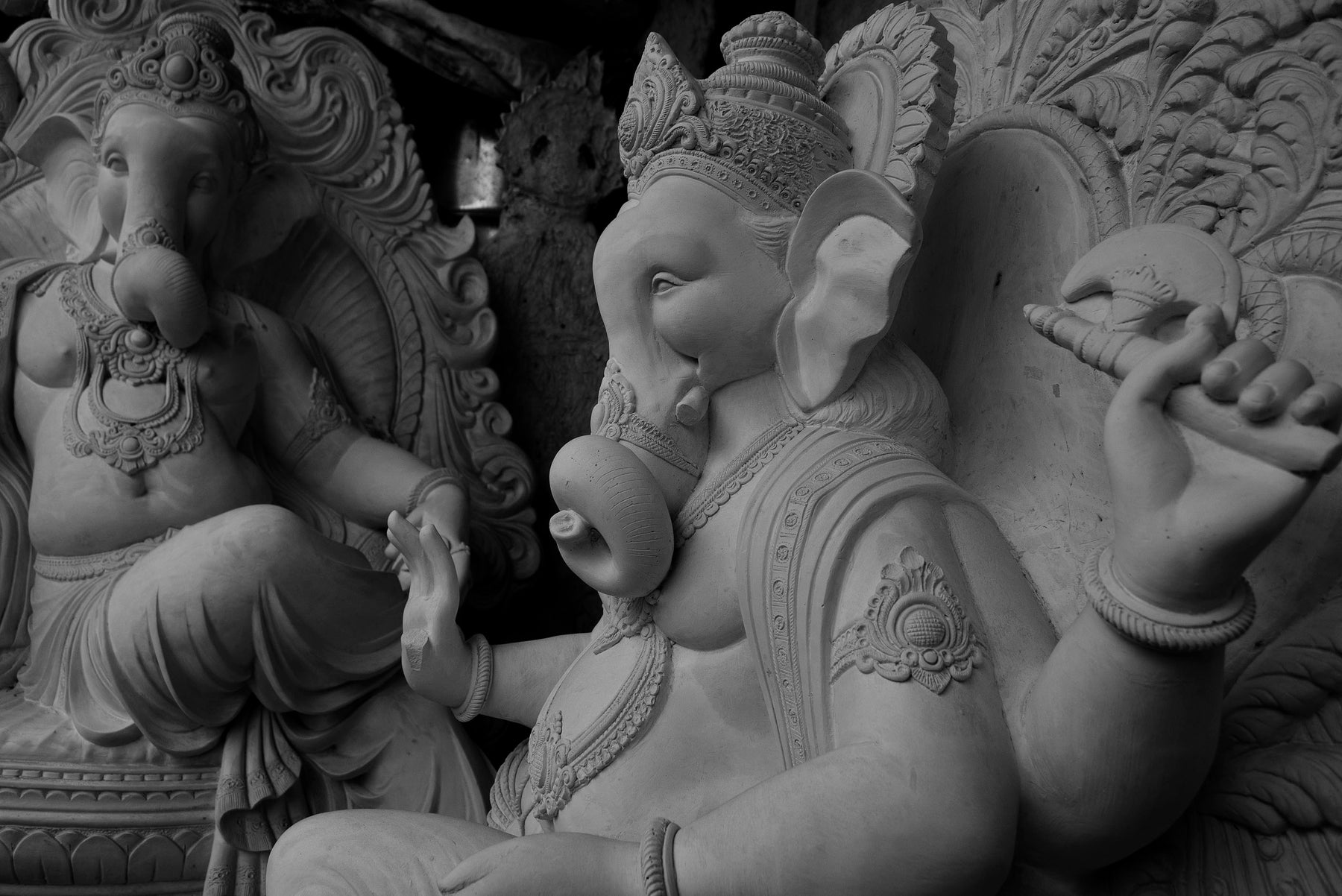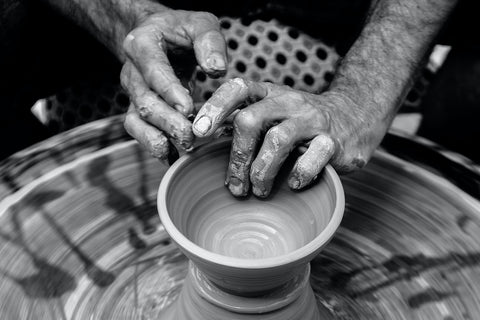
Kumbharwada - Potter's Community in Pune
"Potter's wheel in a way symbolises the epitome of civilization. From dust and clay, it gives shape to forms and designs which contain the early dreams of man; but the potter who wields the wheel continues to remain a son of the clay. He lives in dust and squalor, poverty and misery and his life is strewn with the ashes of burnt out hopes. Even then he has moments, when he feels that he is the master of creation. It is not only the story of the pot-making but also of the shadows and sun-shines in the life of the potter which is of importance for a student of 'Man'. "
~ B. K. Roy Burman (Anthropologist and Social Scientist)

One can't talk about Indian arts without the mention of pottery. Being an agricultural country, pottery has been practised since ancient times. Evidences have been found in the artifacts made in the Vedic, Indus and Mughal period. Initially, pots were made to store water and grains. With time it evolved into an art form - artifacts of deities, representation of the daily lives of people, home decor, diyas to name a few. Potters from as far as from Persia, Central and Middle East were encouraged to settle in India. Right from Rajasthan's Molela murtikala to Bengal's terracotta, this craft has been practised across the length and breadth of the country.

In the Hindu mythology, the beginning of pottery can be traced back to Samudra Manthan. The fierce churning of the ocean between the Gods and the demons yielded in many precious things, one of them being nectar. But how did they hold this nectar? That's when Vishwakarma, the divine architect, took out a bit of kala or spirit from each of the Gods and moulded it into a pot. From kala came the Sanskrit word Kalasa or water pot.
Kumbharwada in Pune

Kumbharwada is located in Kasba Peth in Pune. The word 'Peth' in the Marathi language, translates to 'locality'. Kasba peth is said to be established during the 5th century and it is the oldest residential part in Pune. The potter community known as 'Kumbhar' or 'Kumhar' is derived from the word 'Kumharkar', meaning maker of kumbha (earthen pot).
Along with making pots of daily use, decorative wares are also manufactured to cater to the urban tastes. One such example is the creation of Ganpati idols during Ganesh Chaturthi. Idols of various sizes and colours are manufactured and transported to different parts of the city.

Situated on the banks of the river Mutha in Kasba Peth, ancient-day potters used the clay from this river for their crafts. Since most of the river has now dried up, obtaining good quality clay has been difficult. Using Plaster of Paris (POP) instead of pure clay has proved to be a much more convenient way. In recent times, due to increased awareness of the role which POP plays in polluting the rivers, potters are shifting back to using eco-friendly materials right from clay to the paint used in making the Ganesha idols.
Kumbharwada is a labyrinth of alleys and small houses. Previously, the commercial activities took place in front of the shop, whereas the potters resided at the back of the shop along with their families. Due to space constraints, most of the activities have now been moved to Mundhwa.
